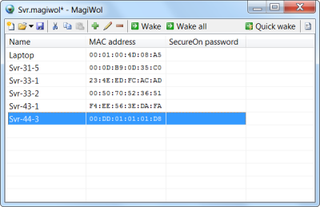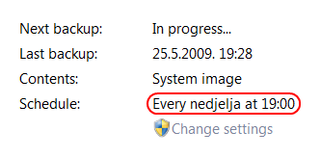
I accidentally stumbled across this wallet and I liked the idea. I didn’t care about Tyvek nor did I cared how thin it was. I fell in love with number π (pi) on Dot matrix printer style paper.
I shared my excitement with wife and she immediately noticed that you don’t have pocket for coins. Disappointed with this, I decided not to buy it. That decision didn’t last too long since I did order it next day.
I have wallet for more than a month now and I cannot say that it is most practical wallet I had. I keep my coins floating freely in my pants (no pocket for coins), least used cards are hard to extract from wallet (only two compartments) and my driver’s license cannot fit.
However, every time I take it out and I see those numbers, I do not care. This is ultimate wallet that programmer can have.
[2009-07-11 For those who are wondering, fifty (50) Euros is biggest denomination that still fits inside of wallet] [2022-03-03 Newer version of this wallet has holes painted instead of punched]



